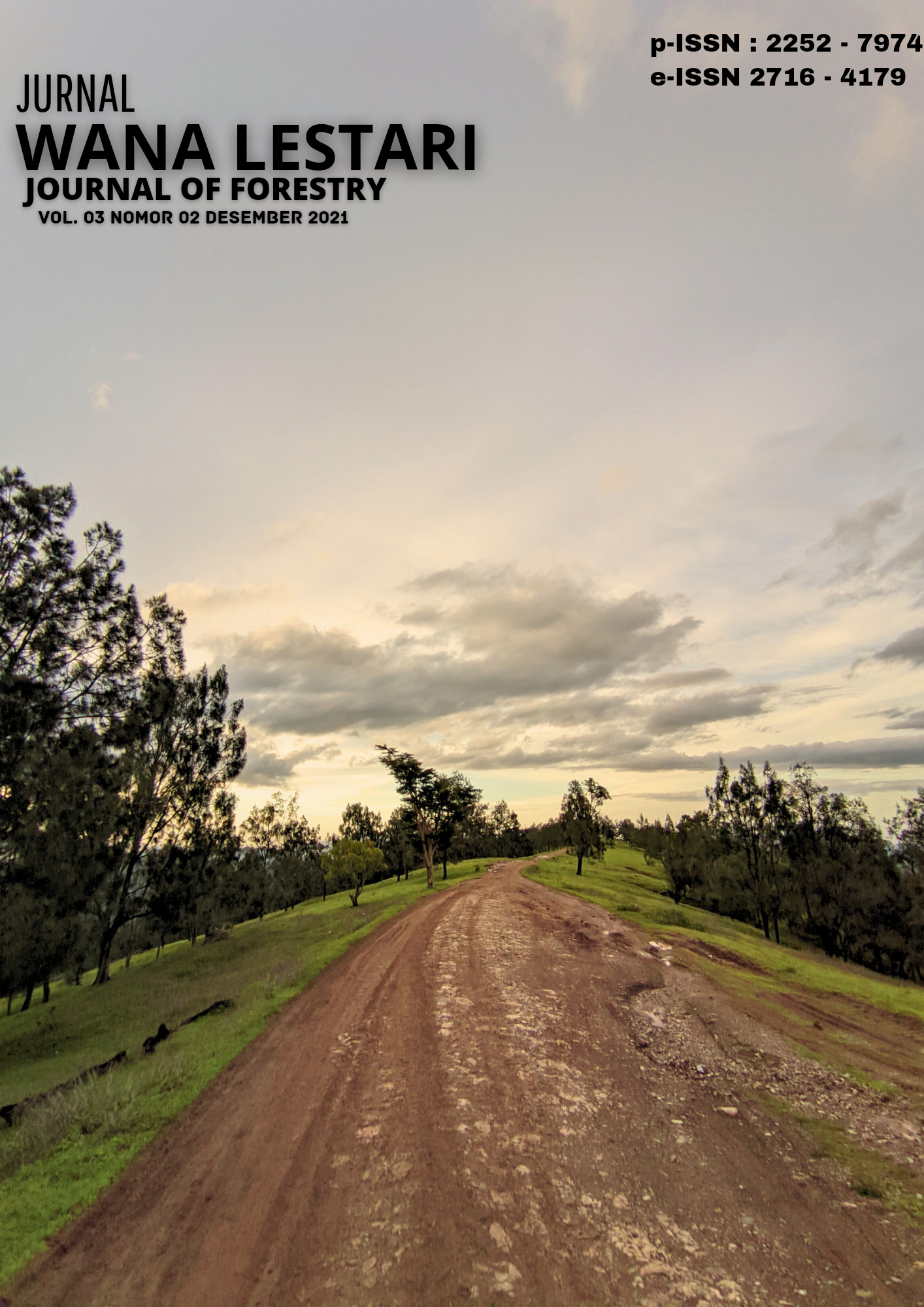COMPARATIVE ANALYSIS OF LAND AND FOREST REHABILITATION PROGRAM (RHL) IN THE KUPANG DISTRICT (A Case Study in Oelatimo Vilage, East Kupang Sub-district and Oeletsala Vilage, Taebenu Sub-district)
Abstract
Forest and Land Rehabilitation (RHL) is one of the government's efforts to address critical land. The government collaborated with the community for forest and land rehabilitation carried out by the Kupang Regency Forest Management Unit (KPH) with forest farmer groups in Oelatimo Village, East Kupang District and Oeletsala Village, Taebenu District in 2019. Based on Regulation of the Minister of Environment and Forestry Nomber P 105/2018, RHL instruction is implemented on critical land inside and outside the forest area, location and area of planting location, number and type of seedlings; Planting schemes, socio-economic and institutional conditions, preparation, provision of seedlings, planting and maintenance of plants, institutional preparation, arrangement of planting, and preparation of infrastructure, checking block boundaries, and constructing inspection roads. There is no information yet whether the that of the two locations is in accordance with the procedures for implementing RHL in P 105/2018 or not? Therefore it is necessary to conduct a study or research. This study aims to see the implementation of activities, supporting / inhibiting factors and improving the that program. Large respondents in this study were 64 people consisting of farmer groups, KPH employees and ordinary people. Data collection was carried out using the method of observation and direct interviews. The data collected was then analyzed descriptively and analyzed using a scoring analysis with a Likert scale to calculate the level. The results showed that the implementation of taht started from the implementation organization, the realization of planting, planting and controlling and maintenance activities. Supporting factors for that activities are standards and policy targets, facilities and infrastructure, socio-economic conditions. While the inhibiting factors are resources, socio-economic conditions and climatic conditions. Increasing the taht program in Oelatimo Village by 33.01% did not succeed in proving that the program in Oeletsala by 63.07% was declared quite successful.

 Evliana Devita Majol(1)
Evliana Devita Majol(1)







